When classic inventions meet modern materials
The late 19th century saw not only the foundation of BASF, but also an upgrade in production technologies brought about by industrialization. Numerous inventions emerged and improved the daily lives of people.
BASF is now inviting young designers to draw inspiration from the past and explore how modern materials might be used to bring these products from the 19th century up to date. Here are 12 new interpretations.
Work skates
Quad skates were invented in 1863. These pivoting rocker skates could be steered by shifting body weight. Ever since, roller skating has become a popular pastime.
With the designers’ rework, roller skates can be used in a modern working environment. The boots can be easily snapped off from the chassis for laundering.
BASF material recommendation:
- Chassis: Ultracom™ for enormous strength
- Rollers: Elastollan® with selectable degrees of hardness
- Yarn: Ultramid® B

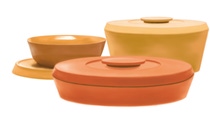
Cooking on wheels
The late 19th century saw shortages in fuel and heating materials. As a result, a box lined with hay was developed for cooking and insulating food.
The designer has developed an elegant, stackable set of bowls with outstanding insulation. Partly cooked meals put into the insulating bowls are perfectly cooked and ready when they are delivered to the table.
BASF material recommendation:
- Bowl and lid: Ultramid® FC for food-contact applications at elevated temperatures.
- Insulation: Slentite® for its outstanding insulation.
Bicycle lock
When the first bicycles appeared in 1865, their locks were too big and heavy to carry.
To reduce weight, the designer has thought back to the lasso, a traditional device for stopping something from getting away, and developed this contemporary cord lock. The lock demonstrates the advantages of Ultramid®B yarns: not only are they light and stable, but easy to carry.
BASF material recommendation:
- Cord: Ultramid® B for yarn with Elasturan® HP core.
- Excentric: Ultradur® for high rigidity and stiffness.
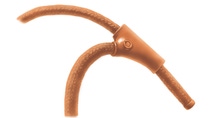

Induction dynamo
The first patent for electric bicycle lamps with AC dynamos was in 1886. Since then, bicycle lamps have invariably been electric, supplied by cable.
The designer has devised an innovative light system using a combined front and rear lamp with no cables or plugs needed. An induction dynamo is used. The batteries built into the dynamo charge during cycling with no direct contact with the front wheel, thus making electricity.
BASF material recommendation:
- Reflector: Ultrason®
- Sleeve: Elastollan® for high flexibility.
- Optical System: Elastollan® LED.
Ceiling fan
Towards the end of the 19th century, the Punkah ceiling fan found its way to the USA. It imitated the bird’s wing in both structure and motion to provide a refreshing breeze.
The designer has rediscovered the pleasant breeze created by the Punkah. Driven by an electric motor concealed inside the blade, the fan can help create a pleasant atmosphere with this quiet and graceful form of aeration.
BASF material recommendation:
- Blade; outer shell: Elastollan® nonwoven.
- Blade; inner lining: Elastoflex®
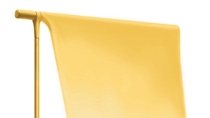
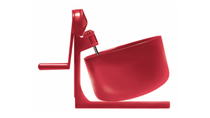
Hand mixer
In the 19th century, the refinement of gear-wheel engineering and kinematics and the mass production of mechanical kitchen appliances, such as apple peelers and meat grinders, made household life easier.
The designer has made a kitchen appliance with elegant, exposed mechanics according to kinematics. With the gear wheel, the machine significantly facilitates the stirring work.
BASF material recommendation:
- Bowl: Ultramid® FC – good stability and certified for contact with foods.
- Large gear wheel: Ultramid® Structure LFX – highly durable polyamide with long glass fibre reinforcement.
- Small gear wheel: Ultraform® – self-lubricating, low-friction plastic.
“Ruhmkorff” lamp
In 1862, the Ruhmkorff lamp was invented. With its chemical battery, it was the first portable electric lamp and forerunner of modern-day torches. Unfortunately, it was too heavy to succeed.
Now, the designers have given it a technological makeover for the present day. The new design consists of a charging station with an orientation lamp and a removable tube with an LED illuminating the transparent plastic rod.
BASF material recommendation:
- Housing: Translucent Ultramid® Balance.
- Lightbar/Tube: Elastollan® LED.

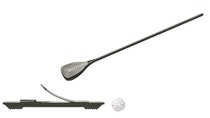
“Knurr and Spell” outdoor game
“Knurr and Spell” was very popular in England in the 19th century. The basis for the game was a sprung trap that fired a small ceramic ball into the air. The player then had to wield his bat to hit the ball as far as possible. The player achieving the longest strike won the game.
The designers have devised a contemporary version with modern materials, and inserted a GPS transmitter into the ball to measure the strike distance and traces.
BASF material recommendation:
- Ball: Infinergy® – excellent recovery behavior lets the ball bounce.
- Spring: Ultracom™ – light composite with excellent spring properties.
Beehive
A modern form of beekeeping was introduced in the mid-19th century. However, frames in traditional beehives have been stacked awkwardly on top of each other for the past 150 years.
The new design allows easy access by opening drawers. The designers chose high-insulation polypropylene foam with low weight to keep the bee colony warm, making it easier for newcomers to the hobby in particular.
BASF material recommendation:
- Drawers and hive: Neopolen® – high-insulation polypropylene foam with low weight and good deformation performance.
- Sliding Rails: Ultraform® for excellent sliding properties
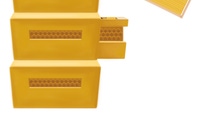
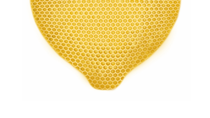
“Darwin” honey bee habitat
The 19th century was not just the age of technology. Charles Darwin, who made a detailed study of bees’ honeycomb constructions, also founded a new chapter in the history of biology. With the great recent growth in the popularity of urban beekeeping, swarms were an increasingly frequent sight even in metropolitan areas.
The modern habitat is designed in harmony with the natural architecture of the bees. It is made of modern materials and creates a place for bees to live in an urban environment, offering an alternative to modern beekeeping with modular hives and removable frames.
BASF material recommendation:
- Habitat: Neopolen® – high-insulation polypropylene foam with low weight and good deformation performance.
- Wall mount: Ultramid® Structure LFX for very high strength and low creep.
Tabletop Developer
The patenting of the tintype process in 1855 paved the way for the first photo booths with quick and inexpensive prints.
Paying homage to these early machines, the designer has now designed a tabletop developer for smartphones. It uses an APP to convert the image to a negative, then to shine the negative to a photo paper through the lens. Various cartridges of developer, such as stop bath and fixer, are then inserted into the unit, which rocks on its rounded base to help distribute the fluids evenly. Finally, the authentic paper photo print is removed from the developer.
BASF material recommendation:
- Cartridges and bowl: Ultraform® for easy cleaning and high chemical resistance.
- Housing: Ultradur® for high stiffness and precision.
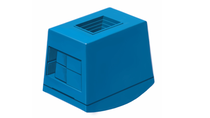
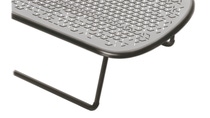
“Explorator” camp bed
Louis Vuitton invented the first foldable camp bed, the “Brazza trunk”, in 1885.
The designers have been inspired to create a folding camp bed with an extruded Ultraform® (POM) sheet. The springy quality of Ultraform® means that no mattress is needed, and the material is also very easy to clean with water.
BASF material recommendation:
- Frame: Ultramid® Structure LFX.
- Bed Surface: Ultraform® sheet – easy to stamp and to clean after use.